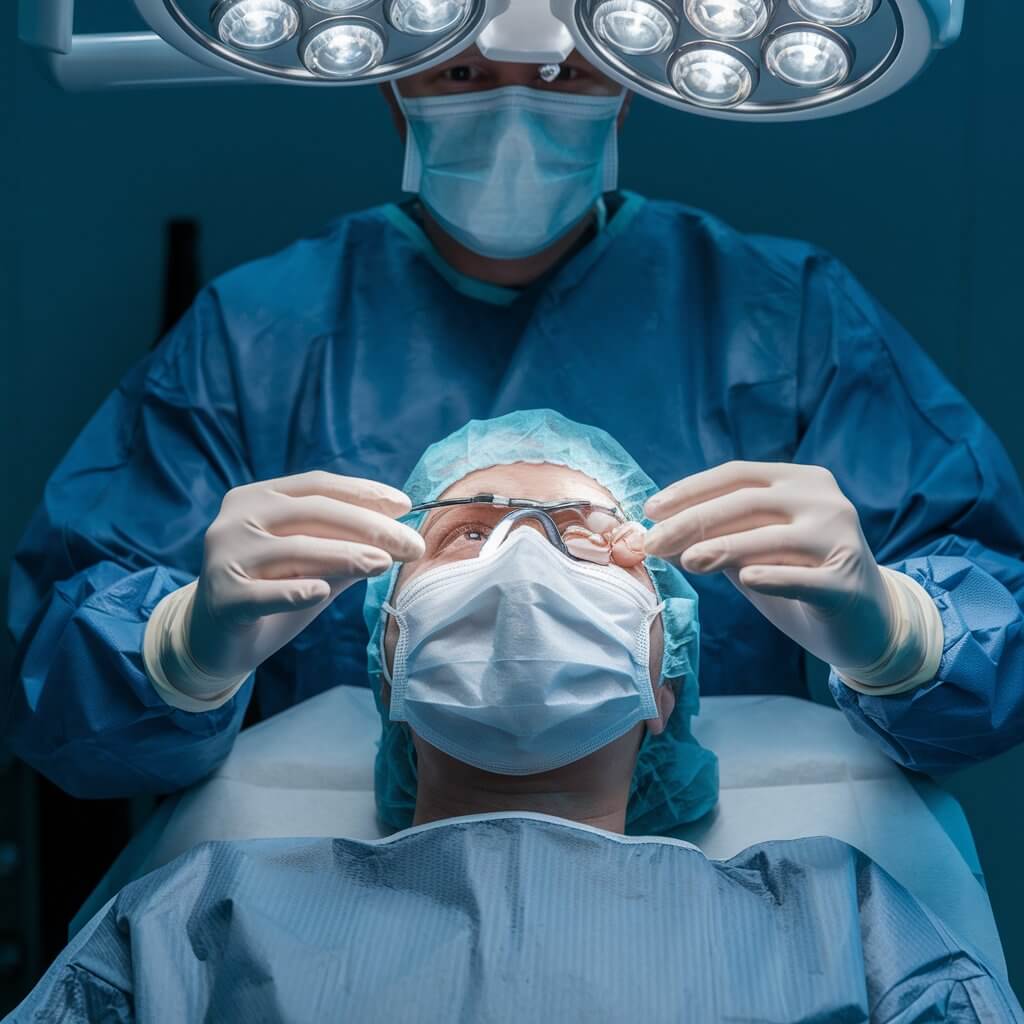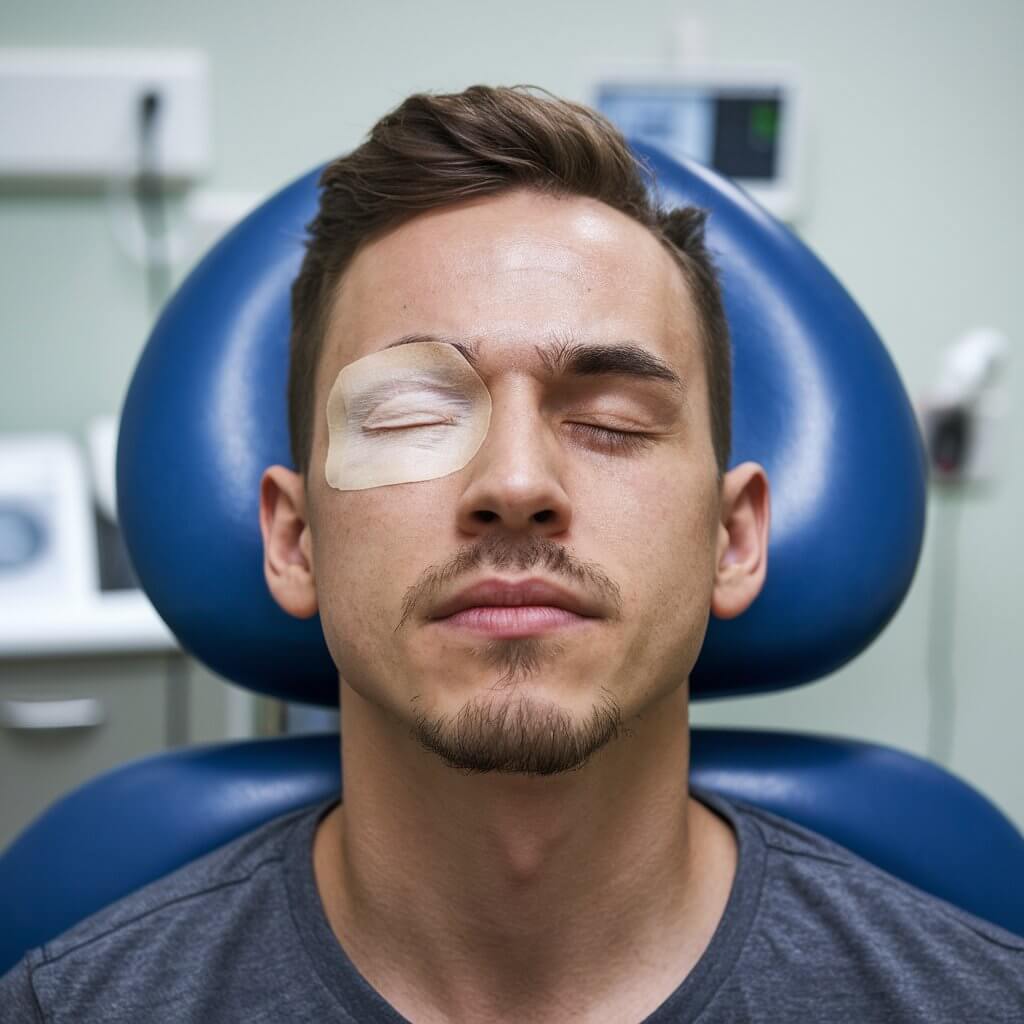It is a simple operation performed to correct impaired vision.. Nevertheless, there are still a lot of dangers and inconveniences, inherent to any surgery. However, in this article, we will be providing elaborated information about the drawbacks of under going cataract surgery.

1. Risk of Infection
The other operative complication of cataract surgery is the occurrence of infection at some point shortly after surgery. The most recurrent infection is the endophthalmitis. This type of infection comes about once bacteria penetrate the eye region most especially during an operation, or after an operation. Epidemiologically, endophthalmitis left untreated can cause complication involving blindness or even irreversible sight impairments in the patients concerned. Many times, doctors prescribe antibiotic eye drop to prevent bacterial infections. However, it does not mean that an infection cannot be gotten even with barriers used.
2. Swelling of the Cornea
Eye haziness and congestion of the cornea is another probable side effect of cataract operation. It can be would become inflamed during the surgery or sometime after the surgery of the eye.” This condition is known as corneal edema Connecticut College NHS 15 Inflammation may cause a deterioration in vision or pain around the eye. In most cases, the problem is solved by the administration of specific medications. Nonetheless, for the best results, further treatment can be administered in the worst-case situation.
3. Retinal Detachment
One of the known complications of cataract surgery is the presence of retinal detachmenturgical. This happens when the retina separates from its usual situation. Retinal detachment is among the leading causes of blindness if it is not treated as soon as possible. Men and patients who have myopia or other diseases that affect the eye are those that are most likely to develop retinal detachment.
4. It has been replaced with a term that actually better describes this condition, namely Posterior Capsule Opacification (PCO).
Sterile age-related opacification of posterior capsule is an unfortunate occurrence following cataract extraction. PCO arises when there is haze formation at the back of the lens capsule. This makes vision to appear cloudy just like when somebody has got a problem with their lenses, cataract. Fortunately, PCO can be treated by a laser process referred to as YAG laser capsulotomy. This involve taking a small sample through what is commonly known as a ‘rickets pin’ and is a very superficial and takes a very short time though may be done after surgery.
5. IOL Dislocation
Sometimes, following the cataract surgery, the artificial lens inserted in the human eye may shift its position. Displacement of lens may lead to visions disorders and may be corrected by surgeries if need arises. High risk of lens dislocation is among patient with weak structures in their eye.
6. Glare and Halos
Some of the patient’s cases have experienced light glare or halo around the light sources postoperatively. This is often seen in patients in multifocal or Toric lenses wearer. Glare interferes with vision at night-driving or other tasks that demand low light vision. In majority of these cases, the symptoms progress and become less severe as time passes. However, some patients may have long term problems with glare after undertaking surgery.
7. Increased Eye Pressure
In general and literally, cataract surgery can sometime times result in intraocular pressure adding up the situation. This condition is known as ocular hypertension. It comes with high eye pressure which finally leads to the killing of the optic nerve and is known as glaucoma. More severe are emerged complications of glaucoma which, if ignored, lead to complete loss of vision. It is very important to have a follow up check of eye pressure if cataract surgery has been administered.
8. Inflammation and Pain
Pain after surgery is usually experienced with such complications because of inflammation. It will also be noted that inflammation in primary process is allegedly mild and customary only requiring rest. Sterile antibiotics are advised to be applied on the eyes mostly to treat inflammation and pain. But sometimes the inflammation is not reduced to its optimal level hence may require further treatment.
9. Dry Eye Syndrome
Post cataract surgery, the most frequent consequence reported is dry eye disease. Certain eyes issues may occur following the surgery for instance the dry eye because tear production will have been interfered with by the surgery. The symptoms are itching, feeling burn skin, and overall uncomfortable. In the case of dry eyes one requires to use drop solution and other similar products. However, dry eye syndrome might be a new constant condition for some of the patients from now on.
10. Changes in Vision
As much as cataracts do not involve the total eye, but the lens, there are changes in vision after the operation. Some of the patients will develop astigmatism, which is the actual shape of the eyes leading to blurred vision. Some people can notice that they become able to look at nearby objects significantly better, or worse, than earlier, or the opposite.
11. Surgical Risks
Like all surgeries do, cataract surgery has some risks that are inherent in that surgery. Like any other medical procedures, some complications are expected to arise before, during or after the test. These are things like bleeding, swelling of the eye including the optic disc and nerves and any structures surrounding the eye. While they are rare they do tend to worsen if the patient is suffering from other conditions that could lead to loss of vision or if the patient requires another eye surgery.
12. Cystoid Macular Edema
CME is a disease characterized by the edematous consistence of macular region of the retina forming cystoids after the surgery. It may also lead to partially or even no vision of the areas under discussion. Concerning treatment they usually prescribe a remedy which is normally in the form of anti–inflammatory drugs. But it has been said to lead to vision impairment although in many cases its effects are not permanent.
13. Risk of Allergic Reactions
Another effect of cataract surgery is an allergy that may arise out of any drug administered to the patient before, during or after surgery. They therefore include rash, itch or redness and in worst case instance swelling. In more severe cases, an allergy may lead to a problem with sight. A patient’s surgeon should be aware of any allergies that patient has, or any other medical condition for that matter.

14. The effects it can have in patients with other ocular diseases
Some of the risk factors include previous ocular pathology, age, history of other illnesses such as diabetes or hypertension, and perhaps male gender. These conditions can be worsened in some cases by cataract surgery. Patients who are considering cataract surgery should consult their surgeons about certain aspects of his/her history.
15. Long Recovery Time for Some Patients
After cataract surgery, most patients are able to regain the use of their eye in a matter of weeks. At the same time, in some patients, the postoperative period may be longer – up to 2-3 hours. It also has causes that can slow recovery which include age, other diseases and dodgy surgical procedures. Overall vision may be slightly blurred or uncomfortable during the period of healing.
16. Possibility of Reoperation
It is however important to note that there are times one may be needed to undergo a second surgery after cataract surgery. This may be because of some resultant factors like displacement of the lens of the eye or maybe detachment of the retina of the eye. Secondly, some patents find that the vision they gain from the first surgery does not meet the required standard. In addition, there may be a need for a secondary surgery also called secondary implantation of an additional intraocular lens.
17. Expense of Premium Lenses
Most insurance plans include standard cataract surgery; however, not all patients may have their premium lenses paid for. Contact lenses which are made from multifocal or toric can be very costly even though they can help reduce the amount of time one spends with glasses. Patients should be aware of the fact that these are really expensive compared to normal lenses and then decide whether such benefits are worth the money.






